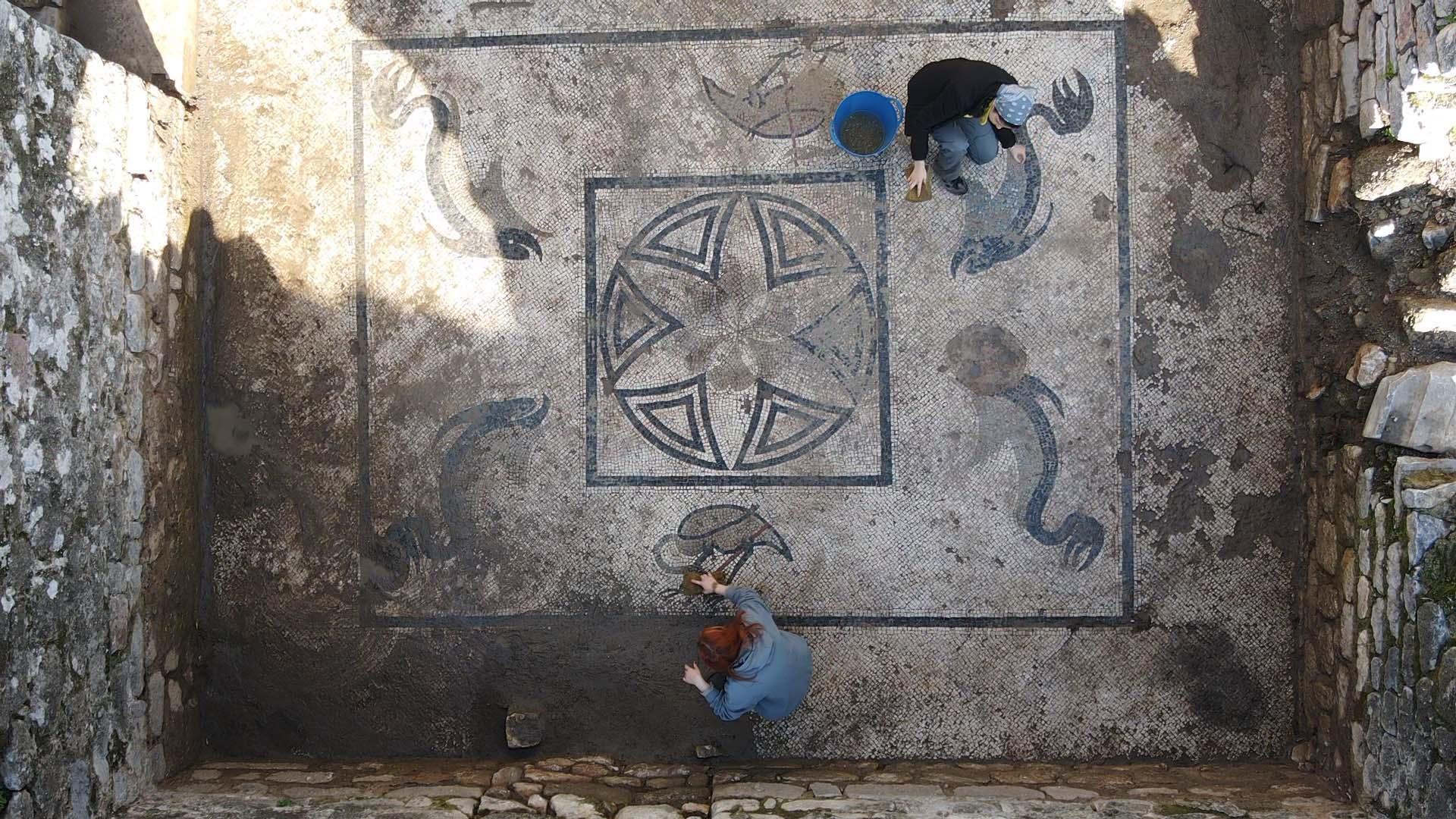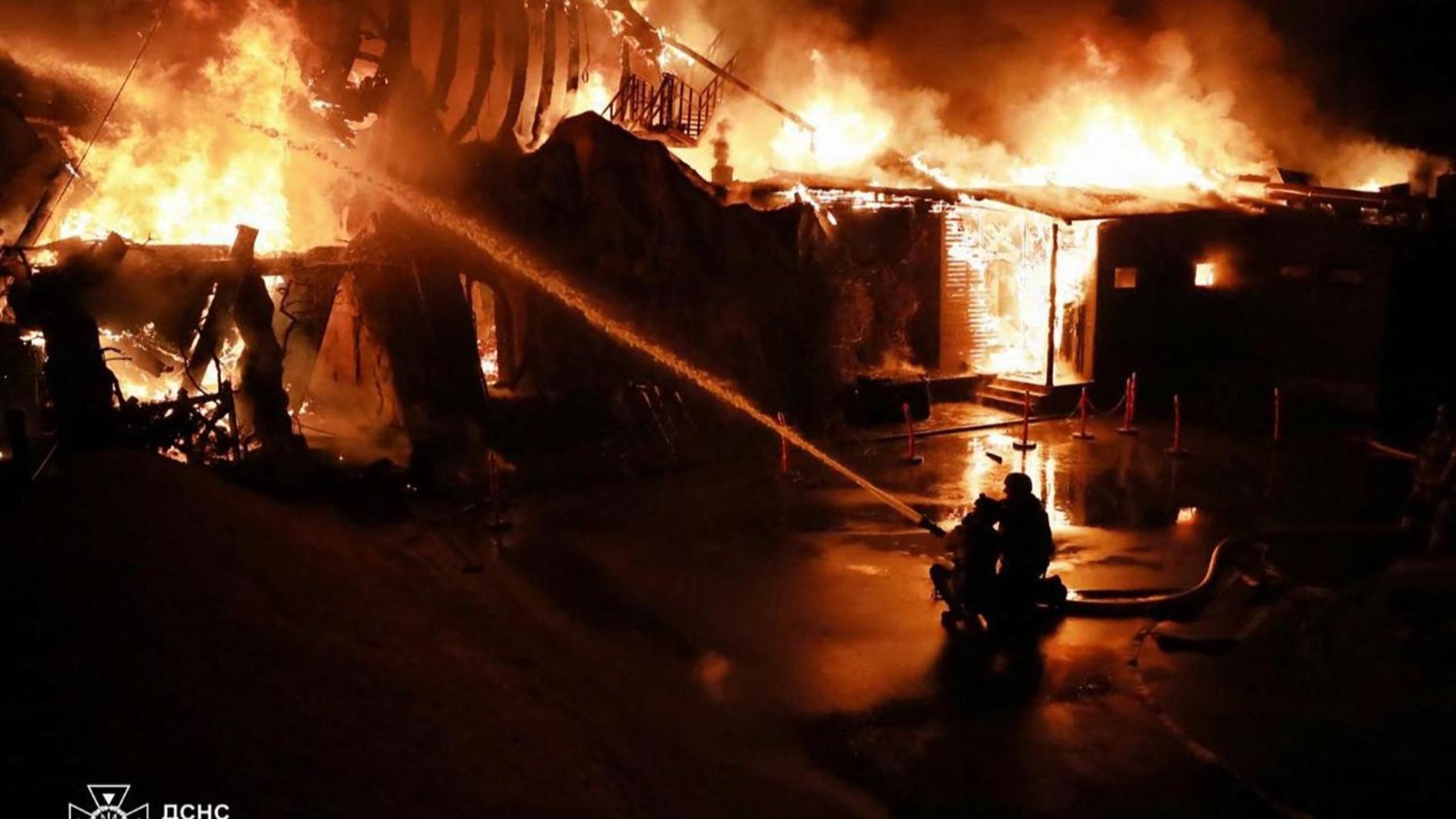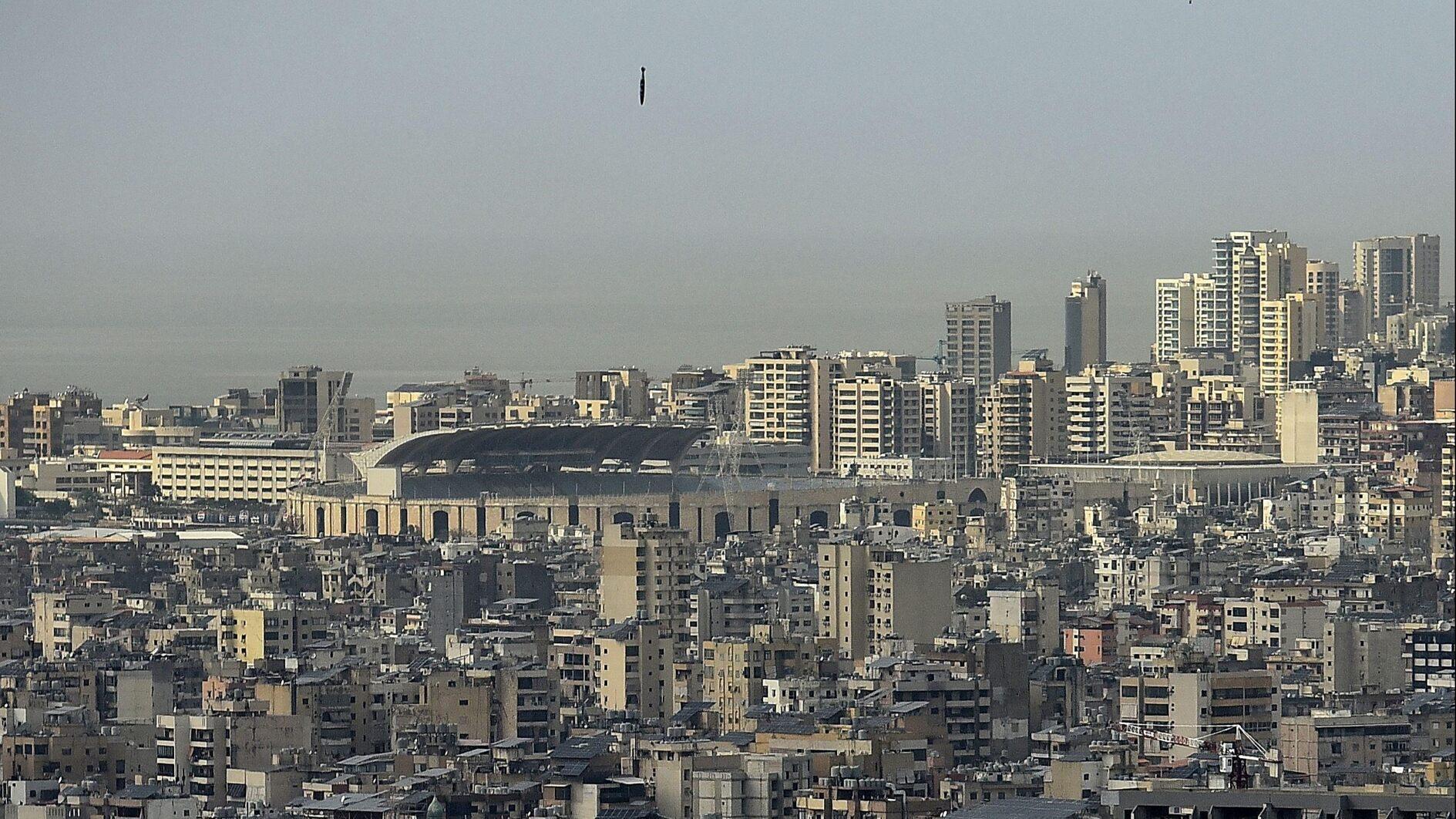Crocodile and eel mosaics discovered in Roman bath
MUĞLA

During excavations in the ancient city of Heraclea in Muğla's Milas district, mosaics featuring crocodiles, dolphins, flamingos and eels have been discovered on the floor of a Roman bath that had been used as a barn by villagers for years.
Professor Zeliha Gider Büyüközer, head of the Latmos and Heracleia Excavation and a faculty member at Selçuk University's Archaeology Department, told the state-run Anadolu Agency that work at the Roman bath in the ancient city was conducted in 2024 as part of the Culture and Tourism Ministry’s "Legacy to the Future" project.
She emphasized the importance of the bath, the best-preserved Roman-era structure in the area, saying:
"We uncovered the rooms of this well-preserved structure, which remains intact almost up to the roof level. We excavated more than two meters of fill. We determined the functions and usage phases of these rooms, providing significant archaeological data."
Büyüközer highlighted the mosaics in the sections they excavated, particularly in the "frigidarium" (cold room), noting the presence of crocodile depictions:
"Six depictions of crocodiles facing each other were uncovered. These mosaics sparked great interest. Observers might think crocodiles once lived in this region. While the geography is not suitable for crocodiles, the artisan who created this mosaic must have seen one to replicate it with such detail. Therefore, we believe the artisan might have been an itinerant craftsman who previously worked in regions where such crocodiles lived."
‘Depicting Animals He Observed’
In the tepidarium (warm room), designed to prevent heat loss, another well-preserved mosaic floor was uncovered.
"Here, mosaics feature four dolphins positioned in the corners, surrounded by flamingos. Intriguingly, the flamingos hold red-stone-crafted eels in their beaks. Eels are significant for this region, while flamingos remain a local bird species even today. The artisan appears to have depicted the animals he observed in this area," she said.
Büyüközer said that the durability of the mosaics was due to the floor being built on rock foundations.
She also mentioned that the bath structure had been repurposed over time:
"We know it was once used as a barn. The current owners confirmed that they used to tether their animals here. Even now, part of the bath is used as a barn. The mosaics and findings have attracted great interest from locals, who often say, 'We never imagined this place to be like this.' Many people from nearby areas visit to see the mosaics."
Turcen Aydın, a 68-year-old resident of Kapıkırı neighborhood, where Heraclea is located, said he had tied his animals in the area with mosaics for years.
He explained that he protected his animals from rain and cold in the historical site, adding, "After the excavations began, I was astonished to see the mosaics and figures. The excavation team did extensive work here, allowing us to see these historical artifacts. I was so happy. I never imagined witnessing something like this. It turns out we had been living on history without even realizing it."
















